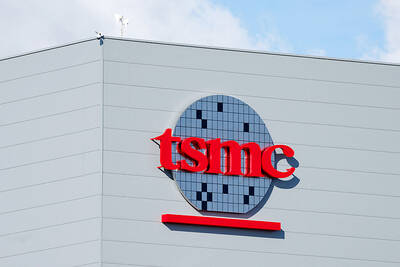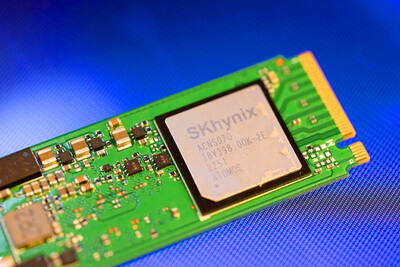The Directorate-General of Budget, Accounting and Statistics (DGBAS) yesterday raised its forecast for Taiwan’s GDP growth this year to 4.27 percent, from the 3.90 percent it predicted in August, as exports and private investment proved stronger on the back of the artificial intelligence (AI) boom.
The upward revision came after the nation’s export-oriented economy last quarter increased 4.17 percent, 0.2 percentage points higher than data last month showed.
“Taiwan’s current economic state remains healthy and would advance at a pace faster than the global average,” DGBAS deputy head Tsai Hung-kun (蔡鴻坤) told a news conference after a quarterly review.

Photo: CNA
The uptrend would sustain this quarter and next year with a large chance for Taiwan to outperform regional trade rivals South Korea, Hong Kong and Singapore, he said.
The statistics agency is expecting GDP growth of 3.29 percent for next year, an uptick of 0.03 percentage points from three months earlier.
Outbound shipments, which drive more than 60 percent of GDP, increased 8.03 percent during the July-to-September period, considerably faster than the earlier projection of 6.27 percent, DGBAS said.
The showing had to do with aggressive spending on the part of US technology giants to develop AI capacity and applications. Taiwan is home to the world’s top suppliers of AI chips, servers, storage and memory devices used in cloud-based data centers and other AI applications.
Exports might expand 9.72 percent this year, from 8.71 percent previously, in line with rosier earnings guidance by major local tech firms.
However, Taiwan’s economic recovery is imbalanced, Tsai said.
Non-tech manufacturers of chemical, plastic, metal and petrochemical products remain weighed by a slowdown in China and elsewhere as well as by a capacity glut and sharp price competitions, he said.
Firms on the AI supply chain would continue to outperform next year, Tsai said, as US firms have indicated plans to step up AI expenditures.
Business in non-tech manufacturing sectors could improve next year, helped by low bases this year, statistics department chief Tsai Yu-tai (蔡鈺泰) said.
Private investment, another growth catalyst, staged an 8.42 percent increase, as local firms upgrade technology and expand capacity to meet demand from customers, the DGBAS said.
The GDP component is projected to gain further momentum this quarter and stay in expansion mode next year, it said.
Private consumption held resilient, supported by wage hikes and wealth inflation linked to TAIEX rallies, though many Taiwanese prefer to travel abroad, it said.
Revenue at restaurants last quarter rose 0.75 percent, while hotels posted a decline of 1.52 percent in sales, it said.
Financial institutes reported a 7.31 percent hike in interest income and a 21.24 percent jump in fee income.
The consumer price index might grow 2.18 percent this year and moderate to 1.93 percent next year, the DGBAS said, calling attention to lingering geopolitical tensions and unfavorable trade terms ahead.
DGBAS Minister Chen Shu-tzu (陳淑姿) told lawmakers on Thursday that additional tariffs imposed by Washington against Taiwan’s exports, if they materialize, would affect Taiwan’s GDP growth in 2026.
The agency would supply more details regarding different scenarios after the US sheds more reliable light on the matter, the minister said.

Taiwan Semiconductor Manufacturing Co (TSMC, 台積電) secured a record 70.2 percent share of the global foundry business in the second quarter, up from 67.6 percent the previous quarter, and continued widening its lead over second-placed Samsung Electronics Co, TrendForce Corp (集邦科技) said on Monday. TSMC posted US$30.24 billion in sales in the April-to-June period, up 18.5 percent from the previous quarter, driven by major smartphone customers entering their ramp-up cycle and robust demand for artificial intelligence chips, laptops and PCs, which boosted wafer shipments and average selling prices, TrendForce said in a report. Samsung’s sales also grew in the second quarter, up

On Tuesday, US President Donald Trump weighed in on a pressing national issue: The rebranding of a restaurant chain. Last week, Cracker Barrel, a Tennessee company whose nationwide locations lean heavily on a cozy, old-timey aesthetic — “rocking chairs on the porch, a warm fire in the hearth, peg games on the table” — announced it was updating its logo. Uncle Herschel, the man who once appeared next to the letters with a barrel, was gone. It sparked ire on the right, with Donald Trump Jr leading a charge against the rebranding: “WTF is wrong with Cracker Barrel?!” Later, Trump Sr weighed

HEADWINDS: Upfront investment is unavoidable in the merger, but cost savings would materialize over time, TS Financial Holding Co president Welch Lin said TS Financial Holding Co (台新新光金控) said it would take about two years before the benefits of its merger with Shin Kong Financial Holding Co (新光金控) become evident, as the group prioritizes the consolidation of its major subsidiaries. “The group’s priority is to complete the consolidation of different subsidiaries,” Welch Lin (林維俊), president of the nation’s fourth-largest financial conglomerate by assets, told reporters during its first earnings briefing since the merger took effect on July 24. The asset management units are scheduled to merge in November, followed by life insurance in January next year and securities operations in April, Lin said. Banking integration,

LOOPHOLES: The move is to end a break that was aiding foreign producers without any similar benefit for US manufacturers, the US Department of Commerce said US President Donald Trump’s administration would make it harder for Samsung Electronics Co and SK Hynix Inc to ship critical equipment to their chipmaking operations in China, dealing a potential blow to the companies’ production in the world’s largest semiconductor market. The US Department of Commerce in a notice published on Friday said that it was revoking waivers for Samsung and SK Hynix to use US technologies in their Chinese operations. The companies had been operating in China under regulations that allow them to import chipmaking equipment without applying for a new license each time. The move would revise what is known